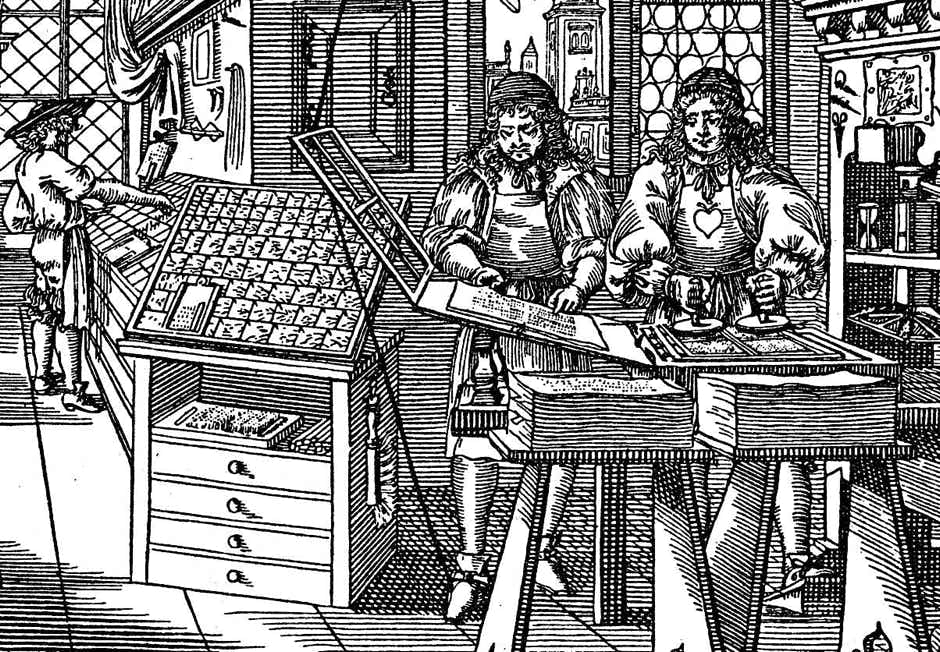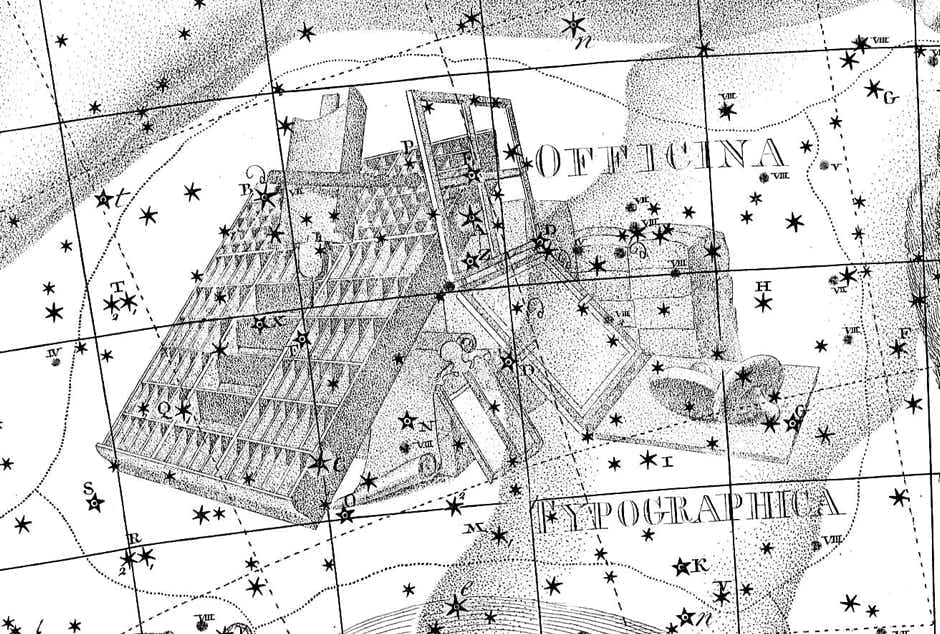
The German astronomer Johann Bode introduced this constellation on his Uranographia star atlas of 1801 to commemorate Johannes Gutenberg’s invention of printing with movable type some 350 years earlier. It lay in what is now the northern part of Puppis, between Canis Major and the hind legs of Monoceros. The constellation’s brightest star was the present-day 16 Puppis, magnitude 4.4, labelled with a capital C by Bode, lying on the lower part of the type case.
Officina Typographica, depicting a printer’s workshop, was invented by
Johann Bode and shown on Chart XVIII of his Uranographia atlas of 1801.
Above it can be seen part of the hind quarters of Monoceros, the unicorn.
As depicted by Bode (above), Officina Typographica consisted of a case of movable type with composing stick; the frisket, a frame with four windows that folded over the printing paper; the tympan, on which the paper was placed; two inking pads to ink the type; and stacks of paper in the background. The printing press itself, which pressed the inked type against the paper, was not shown by Bode.
The whole process in operation is seen in this 17th-century engraving, which might have served as the model for Bode’s illustration:

A 17th-century woodcut depicting a printer’s workshop by Abraham van Weerdt (also known as von Werdt), a Dutch engraver who worked 1636–80 in Nuremberg, Germany. In the background a compositor is hand-setting type. At right a man called a beater is inking the type, while next to him a puller is removing a printed sheet from the tympan, to be placed on the stack in front of him.
As Bode recounted it, the idea came about when he met the French astronomer Joseph Jérôme de Lalande at an international conference at Gotha, Germany, in August 1798. Bode was then still working on his Uranographia atlas and had reached Chart XV. Lalande suggested that space might be found on the remaining charts for some new constellations, and proposed the hot air balloon invented by the Montgolfier brothers in France. In return, Bode suggested a new figure to commemorate the invention of printing. Bode’s figure became Officina Typographica and the Montgolfier balloon became Globus Aerostaticus, thereby celebrating two great inventions of Germany and France respectively.
Both these new Franco–German figures made their debuts on Bode’s Uranographia in 1801. Although subsequently shown on many popular maps they were not eventually accepted, perhaps because the motives for their invention were too overtly nationalistic.
© Ian Ridpath. All rights reserved



